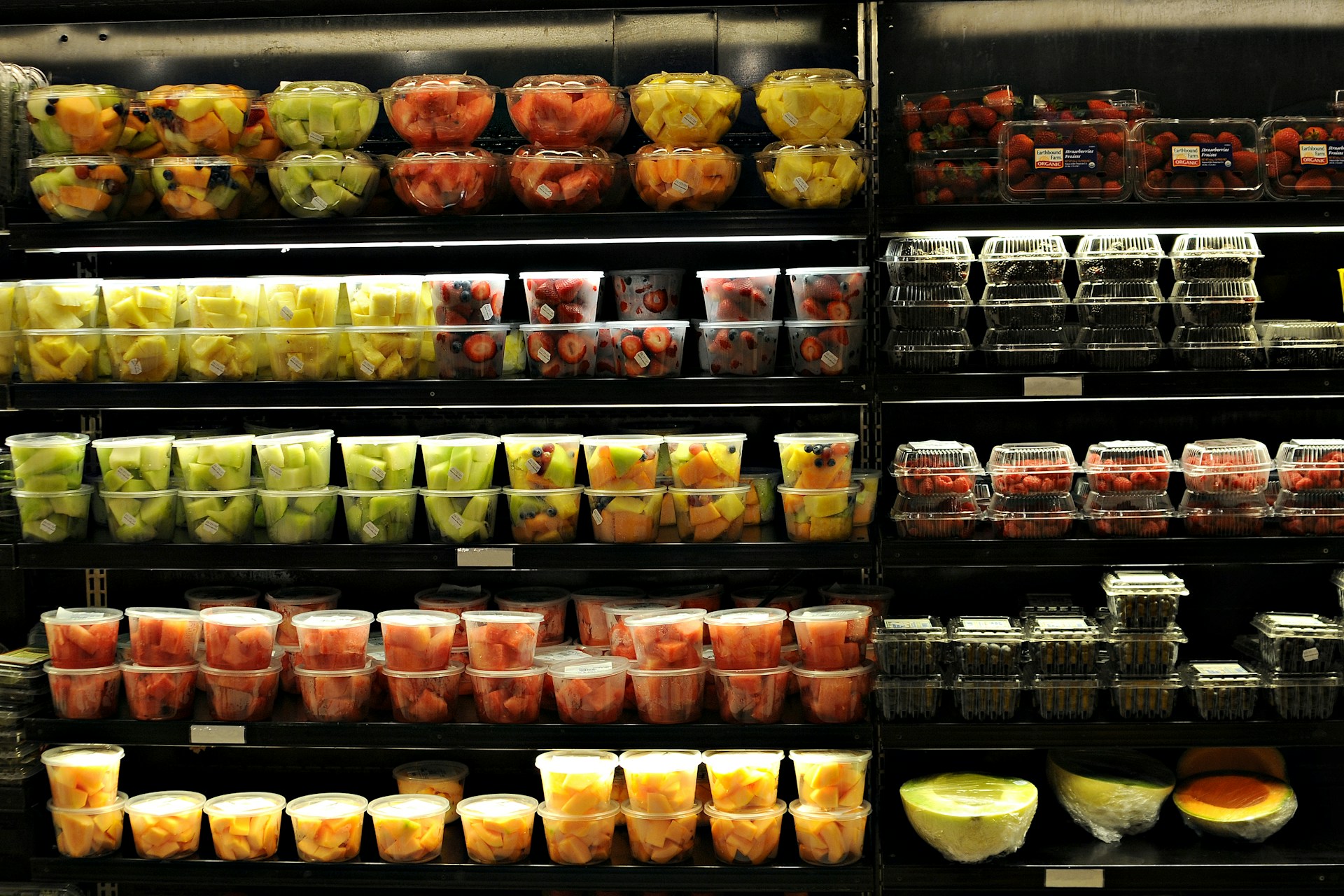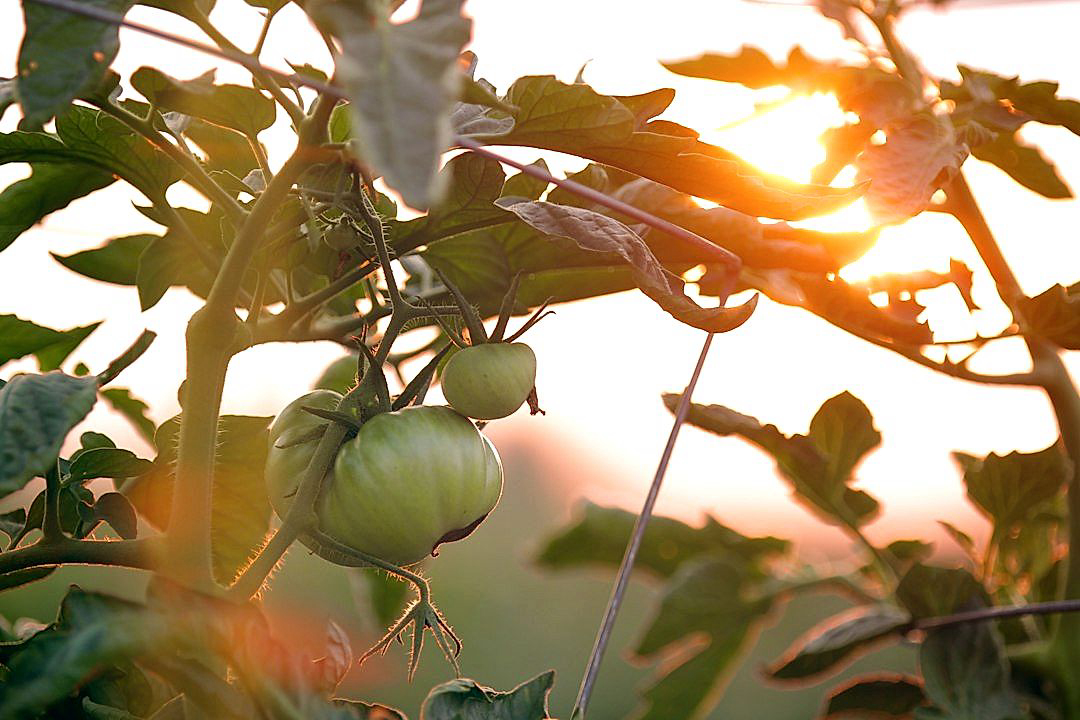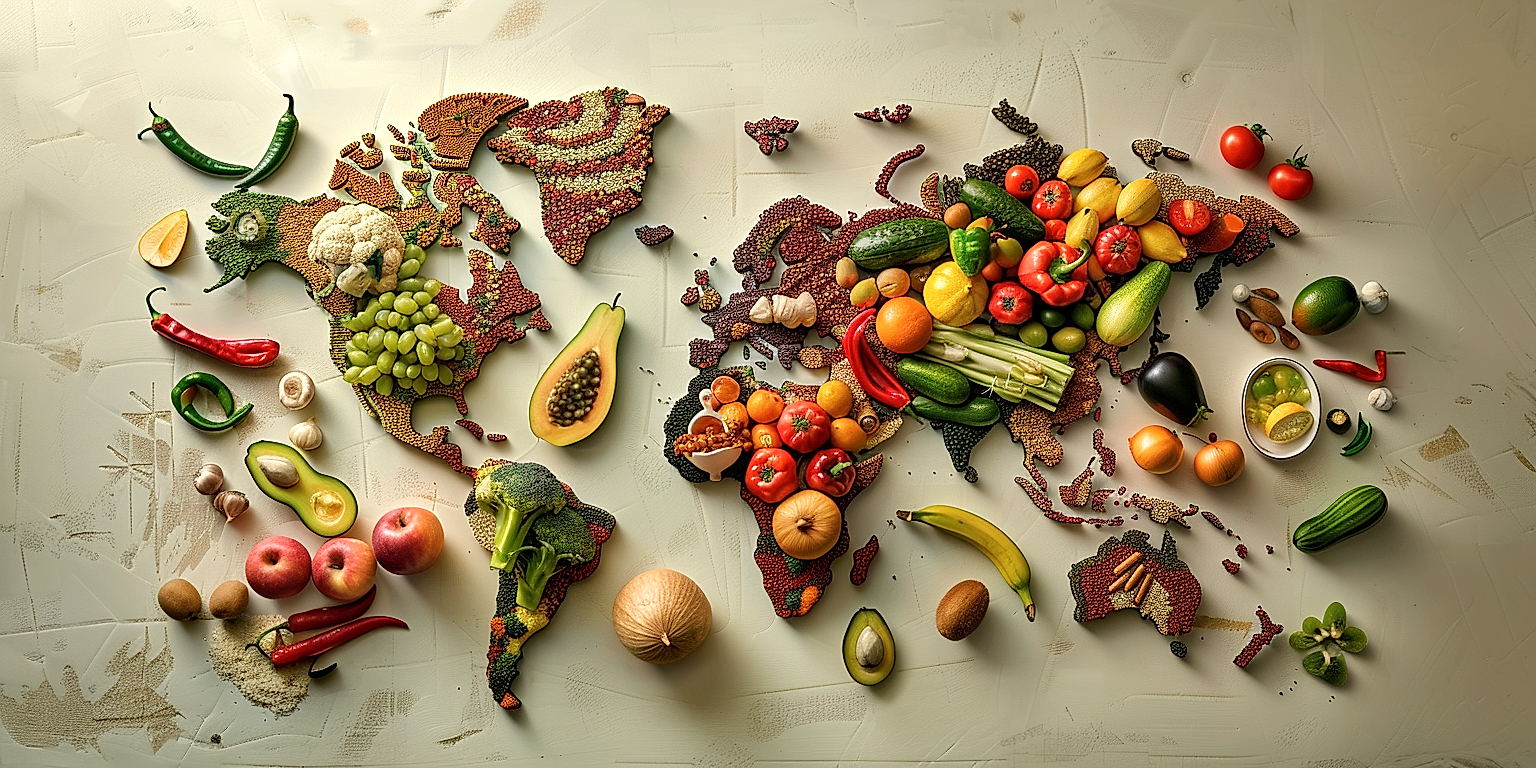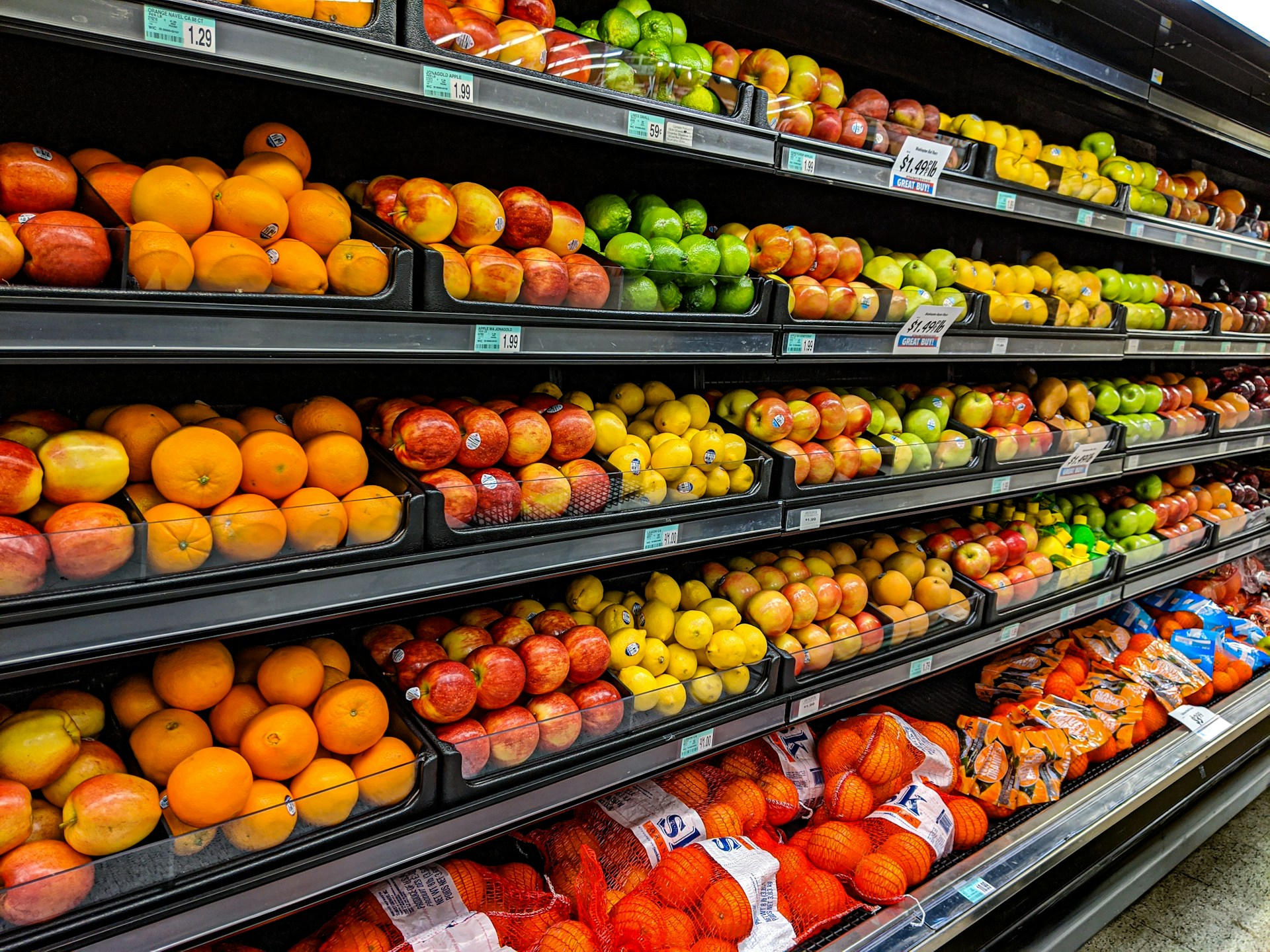In recent times, the sector that brings fresh fruits and vegetables from the farm to your table has been encountering significant hurdles.
Issues range from global trade policies to increasing consumer emphasis on sustainability and health concerns about processed foods.
This complex confluence of factors creates a particularly daunting landscape for those on the business and supply side.
As a result, numerous stakeholders, spanning growers, manufacturers, distributors, and retailers, are facing unprecedented challenges.
Navigating these roadblocks requires an in-depth understanding of the market dynamics involved.
In this article, we venture to unpack these challenges, putting them into context, and explore possible solutions.
Contents
- Challenges Facing Processed Produce Markets
- 1. High Costs for Processing and Packaging Technologies
- 2. Stringent Food Safety and Quality Regulations
- 3. Limited shelf life of processed produce
- 4. Consumer perceptions of processed food health risks
- 5. Stiff competition from fresh produce market
- 6. High costs for waste disposal and management
- 7. Fluctuating commodity prices impacting profitability
- The Bottom Line
Challenges Facing Processed Produce Markets
1. High Costs for Processing and Packaging Technologies
The Processed Produce Market operates in an environment that is characterized not only by increasing consumer demand but also by escalating operational costs.
In particular, the cost of processing and packaging technologies shows a skyrocketing trend, putting a great deal of pressure on the profit margins of the firms involved in this business.
High-tech machinery, used in sorting, cutting, peeling, washing, blanching, and cooling of produce, represent a significant proportion of the operational expenditure in this market.
Furthermore, maintaining the efficiency and output quality of these machines throughout their lifecycle necessitates regular maintenance and possible replacement of parts, escalating costs even further.
This, in turn, impacts the overall cost of production, which may then be passed onto customers in the form of increased product prices.
However, raising prices is not always a feasible option for processed food companies as they also need to remain competitive within the global food market.
The development and implementation of innovative, more efficient processing technologies is another crucial aspect of this challenge.
Companies that invest in research and development for emerging technologies may have to bear substantial costs, especially if the technology fails to produce the desired cost and efficiency benefits.
The cost of packaging is another key element contributing to the overall processing costs.
New packaging solutions, designed to extend the shelf life and preserve the quality of processed foods, often require significant investment.
Furthermore, the use of sustainable, eco-friendly packaging materials is becoming an essential requirement due to increasing environmental concerns and regulatory pressures.
This sustainability shift poses additional challenges to processed food companies, who are already grappling with high operating costs.
The cost of automated packaging lines capable of handling these new packaging materials can be exorbitantly high, adding more strain to the financials of companies in the processed produce market.
Efficient cost management and careful allocation of resources are therefore vital for companies to balance the high cost of processing and packaging technologies with the need to offer high-quality products at competitive prices.
Despite these challenges, investing in advanced processing and packaging technologies is crucial to keep pace with the evolving consumer demands and maintaining a competitive edge in the increasingly competitive processed produce market.
2. Stringent Food Safety and Quality Regulations
One of the most significant challenges faced by the processed produce market is coping with the stringent food safety and quality regulations that are imposed by various controlling bodies.
These regulations are designed to ensure that the food processed is safe for consumption, of high quality, and free from harmful substances.
However, meeting these regulations can be quite costly for companies in this market, particularly smaller businesses with limited resources.
Even minor non-compliance with the regulations can result in heavy fines or even the shutting down of operations.
The level of strictness of these regulations also varies from one region to another, which makes it more challenging for global companies.
Not all companies have the technical knowledge or the financial capacity to constantly monitor and adapt to these changes.
Beyond mere compliance with these regulations, companies also have to consistently prove their adherence through regular audits and assessments.
This could lead to additional costs as most of these audits are conducted by independent bodies certified by the regulatory authorities.
The cost of compliance is then indirectly passed on to the final consumer, raising the price of processed produce.
This heightened price could deter consumers from buying these products, thereby affecting the market as a whole.
The legalities surrounding food safety and quality regulations are very complex and often require the assistance of legal experts.
This legal assistance is another financial burden for companies in the processed produce market.
Also, a company may face damage to its reputation if any information relating to non-compliance with regulations becomes public knowledge.
A damaged reputation could lead to a decrease in sales and make recovrering consumer trust difficult.
Therefore, while these regulations are essential to ensuring food safety and quality, they can pose a major challenge to the processed produce market.
These very reasons make it clear why regulatory bodies have to be responsible and fair while imposing these regulations.
Every new regulation should ideally take into account the potential impact it could have on the economics of the processed produce market.
3. Limited shelf life of processed produce
One of the significant challenges facing the processed produce industry is the limited shelf life of processed produce.
Compared to their fresh counterparts, processed fruits and vegetables have a shorter shelf life.
This is predominantly due to the physical and chemical changes that occur during processing, such as loss of moisture and nutrient degradation.
Furthermore, once the processed produce is packaged and stored, the product continues to age and degrade over time.
Even with the use of preservatives and packaging technologies, the shelf life of processed produce can only be extended to a certain limit.
Consequently, the limited shelf life of processed produce presents a significant challenge for manufacturers in terms of logistics and inventory management.
From the time of production to the time of consumption, processed produce needs to be moved quickly to ensure that it reaches consumers before it starts to deteriorate.
This results in higher operational costs for manufacturers and can also result in product loss if the products do not reach the market in time.
Moreover, consumers prefer fresh produce to processed ones, mainly due to the perception that they are healthier and has a longer shelf life.
Therefore, the limited shelf life of processed produce can affect consumer purchase decisions, and ultimately, the profitability of the processed produce industry.
Ensuring a longer shelf life of processed produce not only requires advanced technologies but also the adherence to stringent food safety and quality regulations.
Nevertheless, innovation in food processing and packaging technologies continues to play a huge role in extending the shelf life of processed produce.
Of equal importance is the manufacturers’ vigilance in maintaining the highest standards of hygiene throughout the processing and packaging stages.
While it is indeed a challenge, extending the shelf life of processed produce can also be seen as an opportunity for innovation and improvement in the processed produce industry.
This challenge might also stimulate the exploration of alternative processing methods that can help in preserving the nutritional value and extending the shelf life of produce.
4. Consumer perceptions of processed food health risks
One of the biggest challenges facing the processed produce market is the increasing number of consumers who perceive processed foods as health risks.
In the last few years, media outlets and dieticians have reported numerous studies linking processed foods to various health complications.
These reports have significantly influenced consumers’ perception and subsequently their choices in the produce aisle.
Consumer education is a significant part of the conversation, as most consumers only react to what they hear or read and often lack in-depth understanding of food processing technologies and their impact on health.
This lack of understanding is often due to the intricacy of food processing technologies, which are complicated for the average consumer to fathom.
Moreover, the industry’s use of technical jargon on food labels can inadvertently intensify consumer fears about processed foods.
This issue is further compounded by the fact that some processed foods do contain unhealthy ingredients such as trans fats, excessive sugars, and salts, which mainstream health recommendations advise consumers to avoid.
Therefore, the challenge for the industry is to change this perception, which is no small feat given the widespread belief among a significant segment of consumers who think that ‘natural’ equates to healthier
This consumer perception has led to the rise of a clean eating movement, that advocates for the consumption of minimally processed or whole foods.
Consumers following this trend are likely avoiding the processed produce market altogether, causing a dip in market demand.
Additionally, there is a growing subset of consumers who have dietary restrictions or food sensitivities, and they often find it challenging to find processed foods that meet their specific needs.
The challenge for the processed produce industry, therefore, lies not only in addressing these health concerns but also in navigating the varying dietary needs of this subset of consumers.
Addressing this challenge will require increased transparency about food ingredients and processing technologies, which can be a real logistic and economic challenge for the industry.
It will also require investment in research and development to create processed foods that are not only safe and tasty but also healthy and cater to the varying dietary needs of consumers.
Despite the challenges, there are opportunities for the industry to innovate and revolutionize the processed produce market in a way that aligns with consumer health trends and dietary needs.
5. Stiff competition from fresh produce market
The processed produce market faces stiff competition from the fresh produce market.
Many consumers prefer fresh produce due to the perceived health benefits and taste superiority.
This preference arises due to the belief that, unlike processed foods, fresh produce lacks artificial preservatives and additives.
Furthermore, the fresh produce market offers a variety of products, which gives consumers a wide array of choices.
This wide array of choices poses a significant challenge to the processed produce markets, which are often limited in product variation.
Additionally, the fresh produce market usually has a competitive advantage in terms of pricing, offering lower prices compared to processed foods.
The high costs of processing, packaging, and preservation in the processed produce market often result in higher retail prices.
As a result, many consumers opt for fresh produce to save on costs.
Moreover, the increased awareness and promotion of healthy eating habits and lifestyle changes, largely advocating for consumption of fresh fruits and vegetables, also intensifies the competition.
Several health experts and nutritional guides recommend limiting processed food intake, further shifting preference towards fresh produce.
The media also plays a significant role in shaping consumer perceptions, with many advocating for a ‘clean eating’ diet, largely comprising fresh produce.
This, coupled with the global rise of vegetarianism, veganism and organic eating habits, presents a massive competition to the processed produce sector.
For processed produce markets to remain competitive, they need to implement strategic measures to challenge these biases, and shift consumer preference.
These may include educating consumers on the nutritional content and health benefits of processed foods and offering a wider variety of healthy processed products.
Addressing these issues could help processed produce markets level the playing field and remain competitive with fresh produce markets.
6. High costs for waste disposal and management
One of the significant challenges facing the processed produce markets today is the high costs associated with waste disposal and management.
This issue arises from the fact that during the processing of fruits and vegetables, a considerable amount of waste is generated.
The disposal of waste can either involve using it for composting or disposing of it in landfills, both of which can be cost-intensive practices for food processing companies.
Strict regulatory guidelines also govern waste disposal, adding to the complexity and cost for the food processing industry.
Additionally, food processors must employ waste management systems to sort and separate waste efficiently, which requires significant capital and ongoing operational costs.
Having a proper waste management system is of utmost importance to reduce ecological footprint as any mismanagement can lead to environmental issues and heavy penalties.
Moreover, the rise in costs of raw materials adds to the burden of waste generation, as any waste generated is essentially a loss of valuable resources and affects the overall profitability of the company.
The need for sustainable practices in the processing industry has led to the exploration of innovative waste management solutions, but these also come along with their own challenges and hefty price tags.
Generating energy through waste is one such innovation that not only gives a sustainable solution for waste management but also requires significant investment.
To combat the rising costs of waste management, processed food industries may seek to implement more efficient production strategies, recycling initiatives, and reduce their overall waste production.
However, these solutions require time, investment, research and often complex technologies, raising questions about their feasibility for all players in the processed produce market.
Few companies have successfully created a closed-loop system, repurposing their waste as animal feed, compost, or for energy generation. However, achieving a zero-waste production seems far off for others.
Costs pertaining to waste disposal and management makes the processed food market a challenging industry, continually trying to balance profitability and sustainability.
The high costs for waste disposal and management is therefore a pressing concern in the processed produce market, with the need for viable and cost-effective solutions being felt more than ever before.
7. Fluctuating commodity prices impacting profitability
The produce processing industry is often dealt a heavy blow by the unpredictability of commodity prices.
This fluctuation not only causes instability in the market but also hampers their profit margins significantly.
Commodity prices are largely influenced by external factors like global demand, climatic conditions, and geopolitical scenarios, which are beyond the control of industry players.
For instance, a sudden rise in the global demand for a particular produce or adverse weather conditions affecting the yield can agilely elevate the cost.
This rise in cost can result in considerable financial strain for the produce processing firms due to the direct increase in their input costs.
One of the key challenges the processed produce sector faces is the unpredictable nature and subsequent fluctuation of commodity prices, impacting the overall profitability of businesses.Moreover, the dynamic nature of commodity prices often demands businesses to have a flexible pricing strategy, which is not always feasible.
The inability to adjust prices proportionately and promptly may not only shrink the profits but potentially raise customer dissatisfaction rates if the costs are pushed onto them.
Additionally, high commodity prices can also squeeze the operational budgets of firms.
This could affect other business aspects, such as research and development, marketing, and product innovation.
In these restive market conditions, maintaining profitability becomes a serious concern, thereby making it a challenging aspect for every player in the processed produce industry.
The processed produce sector’s sustainability and growth are often threatened by the fact that the commodity prices are extraordinarily volatile.
This unpredictable fluctuation of prices significantly affects various segments of the sector, from growers to processors, and from retailers to consumers.
Therefore, companies in the processed produce industry need to develop robust strategies and financial reserves to mitigate the impact of fluctuating commodity prices on their profitability.
Overall, these fluctuations pose a significant financial risk to an already challenging industry, which is battling to stay profitable amidst several other factors.
The Bottom Line
Overall, the processed food industry faces a myriad of challenges, making it a complex sector to navigate.
The pervasive high costs associated with processing and packaging technologies, stringent food safety and quality regulations, and waste management are key elements that squeeze profitability.
Furthermore, the constraints posed by the limited shelf life of processed products and fluctuations in commodity prices may impact the steady flow of operations.
Adding to these pressures, consumer perceptions towards health risks associated with processed food and fierce competition from the fresh produce market cannot be neglected.
Therefore, industry players need to innovate and strategize their plans effectively to sustain in this demanding environment.




